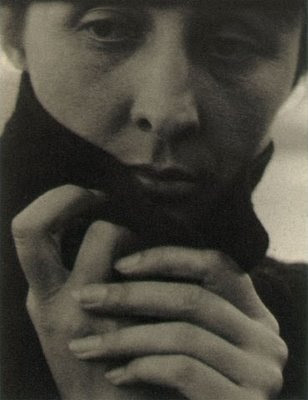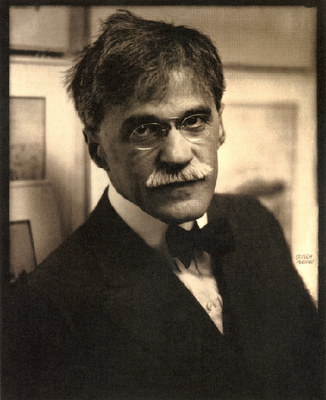Susan Weber was the kind of teacher who inspires people to go into teaching.
She was the kind of a teacher whom those of us who go into teaching aspire to be like.
Our colleges and administrators and the state dept. of Ed and AEA consultants are constantly telling us that we need to maintain both rigor and relevance. Honestly I wonder sometimes how any teacher can possibly provide both. Teachers with rigorous standards often frighten or discourage students and teachers who bring learning alive by providing practical and meaningful relevance sometimes let kids get by with too much (or too little).
Susan was someone who somehow struck the perfect balance. I never knew a student who thought her classes were easy, but I at the same time, I don't remember ever hearing a single student say an ill word about her. On the contrary, I don't know of another teacher in our district and few elsewhere of whom so many students spoke with such admiration, appreciation and affection.
Just today a former student shared with me how much Susan Weber had challenged them, and at the same time encouraged them. They told me without a doubt that they would not be where they are today if it weren't for Susan.
She was truly gifted and she constantly and generously shared those gifts with others. What a gift we've all lost in her now that she is gone. Yet because she touched so many lives, her influence will be felt for generations.
Saturday, January 31, 2009
Friday, January 30, 2009
In Memory

This morning we were told that Boyer Valley's U.S. History teacher, Susan Weber passed away last night. She had been admitted to the hospital last week due to complications from her chemotherapy treatments for Lukemia.
We don't know when the funeral will be yet, but it may be Monday or Tuesday of next week. There was even talk of having it here at school. Please keep her mom, Wanda, and all of her students, friends and colleagues in your prayers.
Susan was a consummate professional who know her stuff and dearly loved her students. She and I enjoyed having long talks about history and politics. I've already missed her all this year while she was on her medical leave of absence. She is irreplaceable. Boyer Valley is truly an emptier place this morning.
Wednesday, January 28, 2009
Theme Spin Offs
| "Characters Welcome" | ||
| Section | Dirrect Spin-Off | Indirect Spin-Off |
| Elementary | Cartoon Characters | Rugrats, Backyardigans |
| MS | Character Development | Immaturity |
| MS Sports | Character Education | Heaveyweights, True Life, Comebacks |
| HS | A range of characters | Confessoins of a teenaged Drama Queen, Secret Life of the American Teenager |
| Summer Sports | Welcome to the big leagues | |
| Fall Sports | Friday Night Lights | |
| Winter Sports | Benchwarmers, Air Bud | |
| Spring Sports | It builds character | Juno |
| Activities | Welcome to the Carribean | Jack Sparrow |
| Fine Arts | Ramona, Step Up | |
| Clubs | Your Welcomed | Bill Nye the Science Guy, Cash Cab |
| Seniors | Welcome to the Real World | |
| Ads | Solicitors Welcome | |
Thursday, January 15, 2009
Painting; Color theory
In the visual arts, color theory is a body of practical guidance to color mixing and the visual impact of specific color combinations. Although color theory principles first appear in the writings of Leone Battista Alberti (c.1435) and the notebooks of Leonardo da Vinci (c.1490), a tradition of "colory theory" begins in the 18th century, initially within a partisan controversy around Isaac Newton's theory of color (Opticks, 1704) and the nature of so-called primary colors. From there it developed as an independent artistic tradition with only superficial reference to colorimetry and vision science.
To learn more, visit http://en.wikipedia.org/wiki/Pastel_colors
To learn more, visit http://en.wikipedia.org/wiki/Pastel_colors
Aesthetic Scanning: Another Way to Look at a Photograph
The four steps of 1. describing, 2. analyzing, 3. interpreting and 5. judging are often used to critique a work of art. Here is another system, aesthetic scanning, a process of discussing the qualities of an artwork. There are five categories:
1. Sensory qualities refer to the art elements including -- line, shape, texture, color, space, value.
2. Formal qualities refer to the principles artists, designers, and photographers use to help compose their images and manipulate the viewer’s attention – balance, unity, emphasis, contrast, rhythm, variety, proportions.
3. Expressive qualities refer to meaning, use of symbol, feelings they evoke, memories they invoke, or reactions they provoke etc.
4. Technical qualities refer to the method and use of materials-- lighting, density, focus, field of vision, depth of field, lens, ISO settings & film speed, etc.
5. Judgmental qualities refer to the viewer's sense of the value of the work – after considering the previous five steps, what criteria do you use to evaluate the impact or importance and how well does this image measure up to those standards?
1. Sensory qualities refer to the art elements including -- line, shape, texture, color, space, value.
2. Formal qualities refer to the principles artists, designers, and photographers use to help compose their images and manipulate the viewer’s attention – balance, unity, emphasis, contrast, rhythm, variety, proportions.
3. Expressive qualities refer to meaning, use of symbol, feelings they evoke, memories they invoke, or reactions they provoke etc.
4. Technical qualities refer to the method and use of materials-- lighting, density, focus, field of vision, depth of field, lens, ISO settings & film speed, etc.
5. Judgmental qualities refer to the viewer's sense of the value of the work – after considering the previous five steps, what criteria do you use to evaluate the impact or importance and how well does this image measure up to those standards?
Tuesday, January 13, 2009
Painting quiz Jan 16 TERMS
- Les Caux Cave Paintings
- Egyptian painting
- Greco/Roman painting
- Medieval painting
- Heronimous Bosch
- Duccio
- Icons
- Book of Kells
- Mattias Grunwald
- Media/medium
- elements of design;
- line
- shape
- space
- value
- texture
- color;
- Spectrum
- Primary colors
- Secondary colors
- Intermediate/tertiary colors
- Complimentary colors
- Chroma/saturation
- Tints
- Tones
- Simultaneous contrast
- Neutralizing
- Warm colors
- Cool colors
- Triads
- Analogous color families
- Monochromatic
Quiz Friday Jan 16 TERMS
Terms (except for Photographers) should be found in the book, pp. 1-19
- Ansel Adams
- Alfred Stieglitz
- Lens
- Aperture
- Shutter
- Viewfinder
- Film speed
- depress the shutter release part way/Automatic focusing
- Image sensor
- USB connection
- LCD monitor
- SLR
- DSLR
- Viewfinder cameras
- Prosumer
Photographer notes; Alfred Stieglitz

"Photography is not an art. Neither is painting not sculpture, literature or music. They are only different media for the individual to express his aesthetic feelings… You do not have to be a painter or a sculptor to be an artist. You may be a shoemaker. You may be creative as such. And if so you are a greater artist than the majority of the painters whose work is shown in the art galleries of today."
Alfred Stieglitz, 1864-1946
American
- Important because he made photography an accepted art form
- Best known for strong compositions, skies citiscapes or subjects nearly abstracted, capturing moments to tell a story with a photograph (photojournalism)
- Editor/Publisher of Camera Work magazine (1903-1917)
- 'Gallery 291' in New York
- "star maker" for photographers, writers, and painters
- Had an affair with, and in 1924 married painter Georgia O'Keefe, whom he photographed extensively (see above),

Yearbook Quiz Jan 16 TERMS
The elements of a yearbook can be found on page 9
- Cover
- Endsheets
- Title Page
- Opening Section
- Dividers/Division pages
- Sections
- Closing/Colophon
- Primary Audience
- Secondary Audience
- Fairness
- Accuracy
- Good Taste
- Libel
- Sedition
- Malice
- Defamation
- Censorship
- Editorial Function
- Public Figure
- Fair Comment
- Hazelwood v. Kuhlmeier
- First Amendment
Tuesday, January 6, 2009
Ceramics Terms & Rules
- Viscosity- lubricated, prevents friction (add water)
- Plasticity- moldable, mailable, workable
- Feldspar- powdered stone that, mixed with water, makes clay (as opposed to dirt, soil, mud, earth, etc.)
- Chemical water- trapped moisture at the molecular level that can cause breaks and blow ups in the kiln
- Structural integrity- stays together, durable
- Consistency of Density- while plastic, makes clay more workable, while drying, prevents cracks and crumbles
- Rule of Thumb- Anything thicker than your thumb needs to be hollow, this helps with structural integrity and prevents chemical water
- No paper in the clay barrel, it breeds mold and microbes
- Please cover the clay barrel at the end of class, so it won't dry out
Photographer notes; Ansel Adams

"You don't take a photograph, you make it."
Ansel Adams, 1902-1984
American
- Best known for black and white landscapes, especially in Yosemite (see above example of El Capitan)
- Concert pianist and mountain climber who survived the 1906 San Fransisco and eventually became not only one of the world's most famous photographers, but a leading conservationist.
- Books:
- Devised the "Zone System" and coined the term "previsualization"- A photographer can use a 10 zone value scale to help chose the right camera and darkroom settings to allow them to produce an image the way they plan it (pre-visualize how it should turn out)
- Helped found Group f/64, the Sierra Club, and Aperture Magazine

Subscribe to:
Comments (Atom)



 follow me on facebook
follow me on facebook
